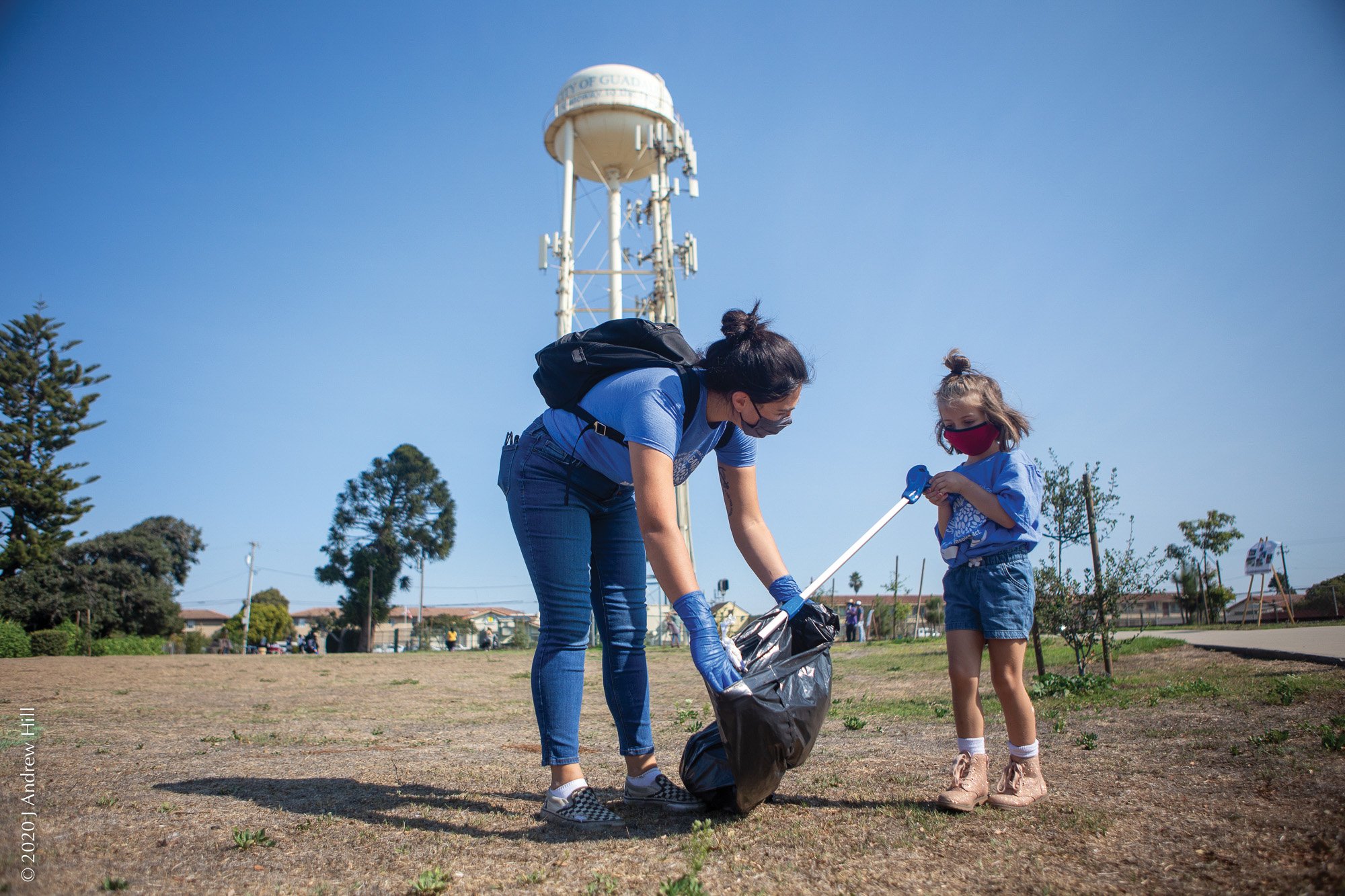
Climate Policy > 2022-2023 Policy Platform
2022-2023 Policy Platform
About the Community Environmental Council (CEC)
The Community Environmental Council is a nonprofit that has pioneered environmental solutions on California’s Central Coast for more than 50 years. Our current work advances rapid and equitable solutions to the climate crisis—including ambitious zero carbon goals, drawdown of excess carbon, and protection against the impacts of climate change.
We build on-the-ground momentum to reverse the threat of the climate crisis. We transform the systems that fuel it. We safeguard the community from its impacts. We’re boldly reimagining how we live on the only planet we all call home. And we believe that, together, we can reverse climate change, repair the damage, and protect local communities from extreme weather effects.
About CEC’s Climate Policy Efforts
Our Climate Policy team collaborates with a diverse group of passionate and committed community members and partners across Ventura, Santa Barbara, and San Luis Obispo Counties to enact the bold policies that will bring equitable climate solutions to scale. When the Central Coast advances ambitious goals and solutions, we illuminate a path that gives the state and other regions confidence to set more aggressive policies.
Reverse Climate Pollution and Reduce Waste
Problem
Climate change is occurring faster and more intensely than previously thought.
The science demands that communities transition away from fossil fuels and stop putting carbon into the atmosphere and pollution in our air within the next decade to avoid catastrophic impacts.
While California has some of the most ambitious climate policies in the U.S., its current goal of achieving carbon neutrality by 2045 is still inadequate.
Solution
Dozens of scalable solutions are available now to reverse the climate crisis.
As the fifth largest economy in the world, California can trigger markets and drive national and global policy through its leadership.
The Central Coast can propel California by solving for hard-to-reach waste streams and modeling a rapid transition to clean, zero-emission transportation and buildings by 2035.
Policy Priorities
Adopt ambitious local government Climate Action Plans and General Plans that advance rapid carbon neutrality goals and strategies. These plans should accelerate state mandates and timelines, and position the Central Coast as a model for other communities.
Push Community Choice Energy providers – such as Central Coast Community Energy, Clean Power Alliance, and Santa Barbara Clean Energy – to stay on track to reach 100% renewable electricity goals. Ensure that these providers develop robust programs to equitably help local residents and organizations adopt clean energy technologies. Ensure that the 67,907 residents of Port Hueneme, Fillmore and Santa Paula have access to Clean Power Alliance.
Advocate for local governments to develop Electric Vehicle Action Plans and ambitious zero emissions mobility policies. Push jurisdictions to build capacity for transportation electrification by hiring EV-focused staff and pursuing more funding opportunities.
Champion all-electric codes so new buildings don’t use natural gas, prioritizing the cities of Oxnard, Ventura, Goleta and counties of Santa Barbara and Ventura. Work with local cities and partners to electrify existing buildings.
Ensure that Central Coast cities and counties meet or exceed the requirements of SB 1383, the state mandate to reduce organic waste in California landfills by 75% by 2025, in part by ensuring that 20% of all safe food headed for the landfill is instead routed to people in need.
Advocate for comprehensive Central Coast regulations for single use plastic reduction, moving beyond the piecemeal approach of tackling products individually (i.e. plastic bags, straws, styrofoam, take-out cutlery).
Repair Lands and Sequester Carbon
Problem
Agriculture is a primary economic and employment driver on the Central Coast and is suffering from front-line climate impacts.
Over the last century, agricultural practices have released tremendous amounts of greenhouse gasses into the atmosphere.
Solution
By rapidly scaling climate-smart management practices on natural and working lands on the Central Coast, agriculturalists can remove carbon from the atmosphere, put it back in the soil, and deliver a huge win for the climate.
If provided with proper incentives, farmers, ranchers, and others in the agricultural sector have an unprecedented opportunity to provide an essential public benefit while improving their bottom line.
Policy Priorities
Advocate for the advancement of state carbon sequestration targets that include an emphasis on natural and working lands as a solution, and which incorporate regionalized data.
Push local governments to include the meaningful involvement of natural and working lands in their Climate Action Planning processes.
Create incentives for ranchers, farmers, and land managers to implement climate-smart agriculture – storing carbon in plants, roots, and the soil beneath our feet.
Reduce barriers to implementing current carbon farm plans and accelerate the creation of additional plans.
Increase the supply of free or subsidized compost available for land managers interested in implementing climate smart practices.
Champion a regional Community Supported Grazing Plan aimed at reducing risk of wildfire and increasing climate resilience in our Wildland Urban Interface and beyond.
Build Climate Resilience and Advance Climate Justice
Problem
The climate crisis is already negatively impacting the Central Coast with record-breaking drought, extreme heat, fires, smoke, floods and extreme storms.
The stretch of coast from Point Conception to the Southern California border is warming at twice the rate as the rest of the continental U.S.
Impacts from climate change disproportionately burden vulnerable populations who are additionally impacted by fossil fuel infrastructure, legacy pollution, and other intersecting injustices.
Solution
Advancing climate justice and centering those most impacted increases the resilience of the entire region to extreme weather and climate impacts, including the public health effects of extreme heat, wildfire and smoke.
For every dollar invested in climate resilience now, six dollars can be saved. This means that Investing in climate resilience creates jobs and saves money.
Policy Priorities
Adopt ambitious Climate Action Plans, General Plan Updates, and Hazard Mitigation Plans that protect communities from the impacts of climate change. These plans should put particular emphasis on the most vulnerable populations, and should promote climate adaptation measures identified by and for people in these communities.
Proactively cultivate opportunities for historically excluded members of the community to participate in local planning processes to ensure that funding, program, and policy recommendations are centered around their wants and needs, as outlined in the Central Coast Regional Equity Study.
Improve language access by bridging the gaps of language and culture barriers to facilitate opportunities for more participatory engagement and leadership within communities.
Support the development and expansion of climate resilience centers and other strategies identified by the community in CEC’s 2022 Action Plan: Achieving Climate Resilience on the California Central Coast.
Establish equity action plans in high risk fire areas that identify the vulnerabilities of frontline and Spanish speaking populations and directly address their needs, as identified in the SB County Wildfire Resilience Priority Plan.
Establish cooling action plans to provide immediate relief to residents during extreme heat events – with a particular emphasis on protecting outdoor workers and vulnerable populations – as outlined in California’s Extreme Heat Action Plan.
Advance restorative actions and systems change by centering on communities who bear the greatest environmental burdens by supporting the Central Coast Climate Justice Network and its Green New Deal framework.
Advocate for decision makers and plans to include the real and lasting impacts of climate change on public health, particularly when there is disproportionate impact on frontline communities and communities of color.
Accelerate Funding for Climate Action
Problem
Immediate, significant financial resources are needed to reduce carbon emissions and avoid the worst climate impacts.
Many local agencies lack adequate sustainability departments or relationships with other agencies to effectively apply for and manage large influxes of funding.
Solution
New federal, state and private funding is being unlocked to address the climate crisis.
Public/private partnerships can help ensure that the Central Coast secures our fair share of resources and spends them wisely and equitably – while piloting and scaling solutions that can be replicated elsewhere.
Policy Priorities
Ensure that local agencies and community organizations are aware of new funding opportunities, and build partnerships and networks to bring significant climate funding to our region.
Support the creation of local government sustainability divisions, push them to set stretch goals, and provide them with the resources they need to pilot and scale innovative policies and projects.
Influence investments in and development of utility and community-scale renewable energy and storage projects to maximize resilience and equity.
Please direct questions to
Farah Stack, Climate Policy Associate






